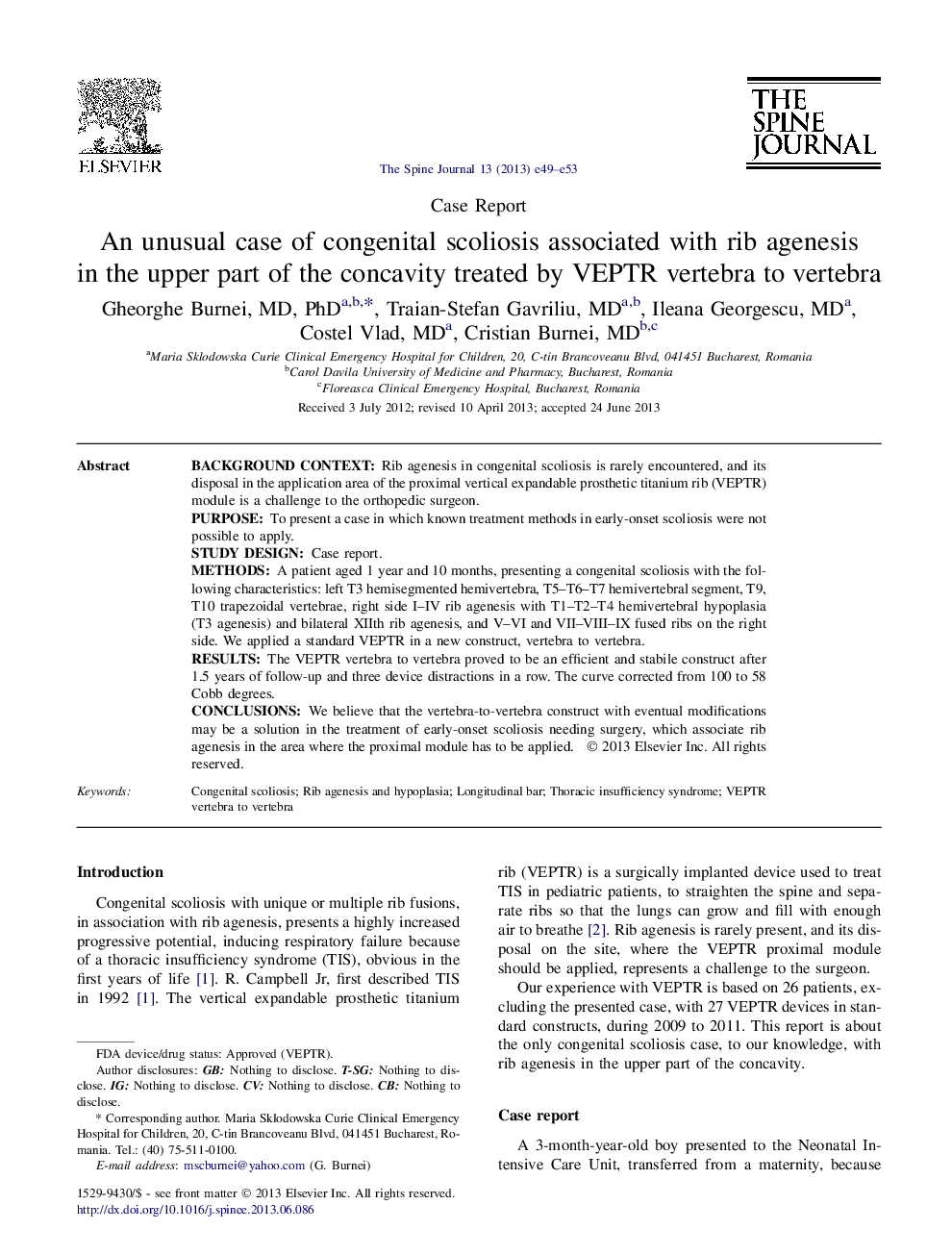| Article ID | Journal | Published Year | Pages | File Type |
|---|---|---|---|---|
| 4097409 | The Spine Journal | 2013 | 5 Pages |
Background contextRib agenesis in congenital scoliosis is rarely encountered, and its disposal in the application area of the proximal vertical expandable prosthetic titanium rib (VEPTR) module is a challenge to the orthopedic surgeon.PurposeTo present a case in which known treatment methods in early-onset scoliosis were not possible to apply.Study designCase report.MethodsA patient aged 1 year and 10 months, presenting a congenital scoliosis with the following characteristics: left T3 hemisegmented hemivertebra, T5–T6–T7 hemivertebral segment, T9, T10 trapezoidal vertebrae, right side I–IV rib agenesis with T1–T2–T4 hemivertebral hypoplasia (T3 agenesis) and bilateral XIIth rib agenesis, and V–VI and VII–VIII–IX fused ribs on the right side. We applied a standard VEPTR in a new construct, vertebra to vertebra.ResultsThe VEPTR vertebra to vertebra proved to be an efficient and stabile construct after 1.5 years of follow-up and three device distractions in a row. The curve corrected from 100 to 58 Cobb degrees.ConclusionsWe believe that the vertebra-to-vertebra construct with eventual modifications may be a solution in the treatment of early-onset scoliosis needing surgery, which associate rib agenesis in the area where the proximal module has to be applied.
